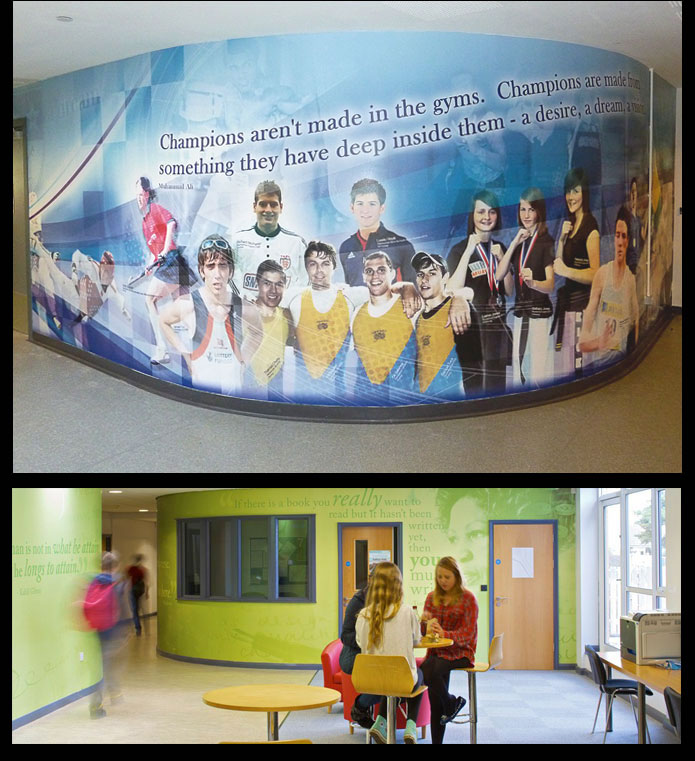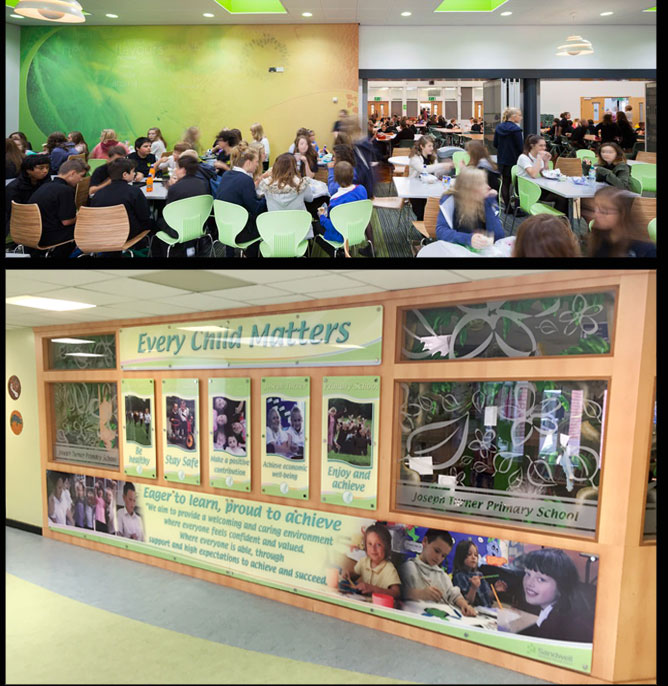
Transforming Environments
Studio Manager Nick Day, assesses the positive benefits for academic achievement, identity and ethos offered by transforming the learning environment...
It has long been
recognised that, alongside good teaching practices and effective
leadership, the built environment of a school plays an important
role in the education and welfare of its pupils.
British children
experience a key part of their lives within schools, which
therefore form one of their principal social
spaces.
Just as a
well-designed house facilitates cohabitation and a well-planned
city centre stimulates commerce and community,
it can also be
said that good design in the school environment positively reflects
upon pupils and their academic results.
Research also
demonstrates that the school environment has perceived and
identifiable effects, both positive and negative,
on school
staff. This was recognised in the ministerial introduction to
the Building Schools for the Future consultation, which states:
‘School buildings should inspire learning. They should
nurture every pupil and member of staff. They should be a source of
pride and a resource for the community.’
Whilst it is being assessed whether or not UK schools are still functional, it is likely that many will be in use for the foreseeable future, undergoing much-needed maintenance to service, extend and revitalise them in an attempt to adapt them to today’s numbers and significantly different educational requirements.
Nearly nine out
of 10 current UK schools were built before 1970 – prior to both the
marketing of the most basic home computer and the change of
government in 1979, which ushered in 25 years of neglect when the
importance of the school environment ceased to be an issue because
effective learning and teaching was reported to occur despite
adverse physical conditions and lack of resources. As a consequence
of this, school leaders now more than ever need to look at
alternative low-cost means of refreshing and regenerating their
schools to create a modern, fit- for-purpose public space that
complements the learning requirements of the
community.


To understand the
ways in which school buildings impact on children and teachers, it
is necessary to consider a number of key features of the built
environment: the school’s location; its size; use of colour,
lighting and ventilation; heating; and noise exposure and
acoustics. Whilst many of these can be costly factors to take
on,
a less expensive
one that remains the topic of some of the most optimistic claims
about morale and efficiency is colour. The use of colour, light and
contrast within built environments plays a huge
role in how
people interact with a space and their personal wellbeing. Used
effectively, the factors can therefore have enormous impact on a
student’s ability to learn and interact.
‘...school
leaders now more than ever need to
look at
alternative low-cost means of refreshing
and
regenerating their schools to create a
modern,
fit-for-purpose public space
that complements
the learning requirements of the
community.’
However, the use
of colour now means so much more than a coat of paint – colour
refers to a defined brand identity, cohesive signage strategies,
inspiring imagery and texts, interactive digital media, and more
recently, digitally printed wall finishes for the transformation of
corridors and wall spaces.
There has never been such a diverse availability of products that can be used to create modern, vibrant spaces for learning. This refocus of a school’s identity and use of sign and display is fast becoming the most prominent and recognised method for a value-for- money strategy to reinforce identity, ethos and values cohesively throughout the entire school and into the community beyond.
It is also worth remembering that quality environments can also send important messages about the perceived worth of a building and its occupants to a community – there is no space within a school that cannot be transformed to promote spirit and give inspiration. Its success lies in leaders being able to articulate a distinctive vision for their school, and then working with designers and architects to create bespoke, integrated solutions.
Nick Day 2011


